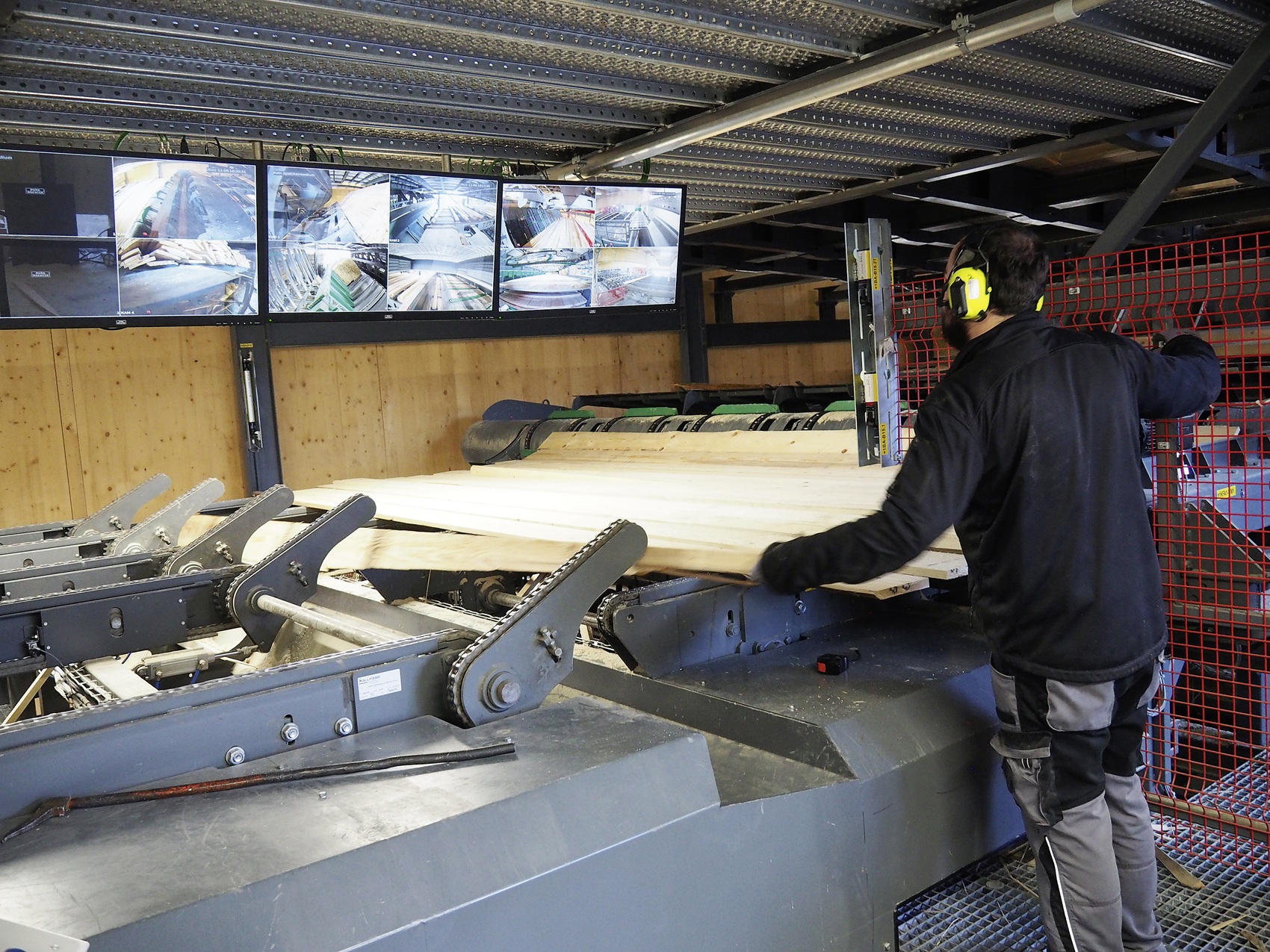The sorting plant at the Sägewerk Kolb sawmill needed to be rebuilt following a fire. The sophisticated concept involved prompted Wolfgang and Fabian Kolb to choose Kallfass as a supplier.
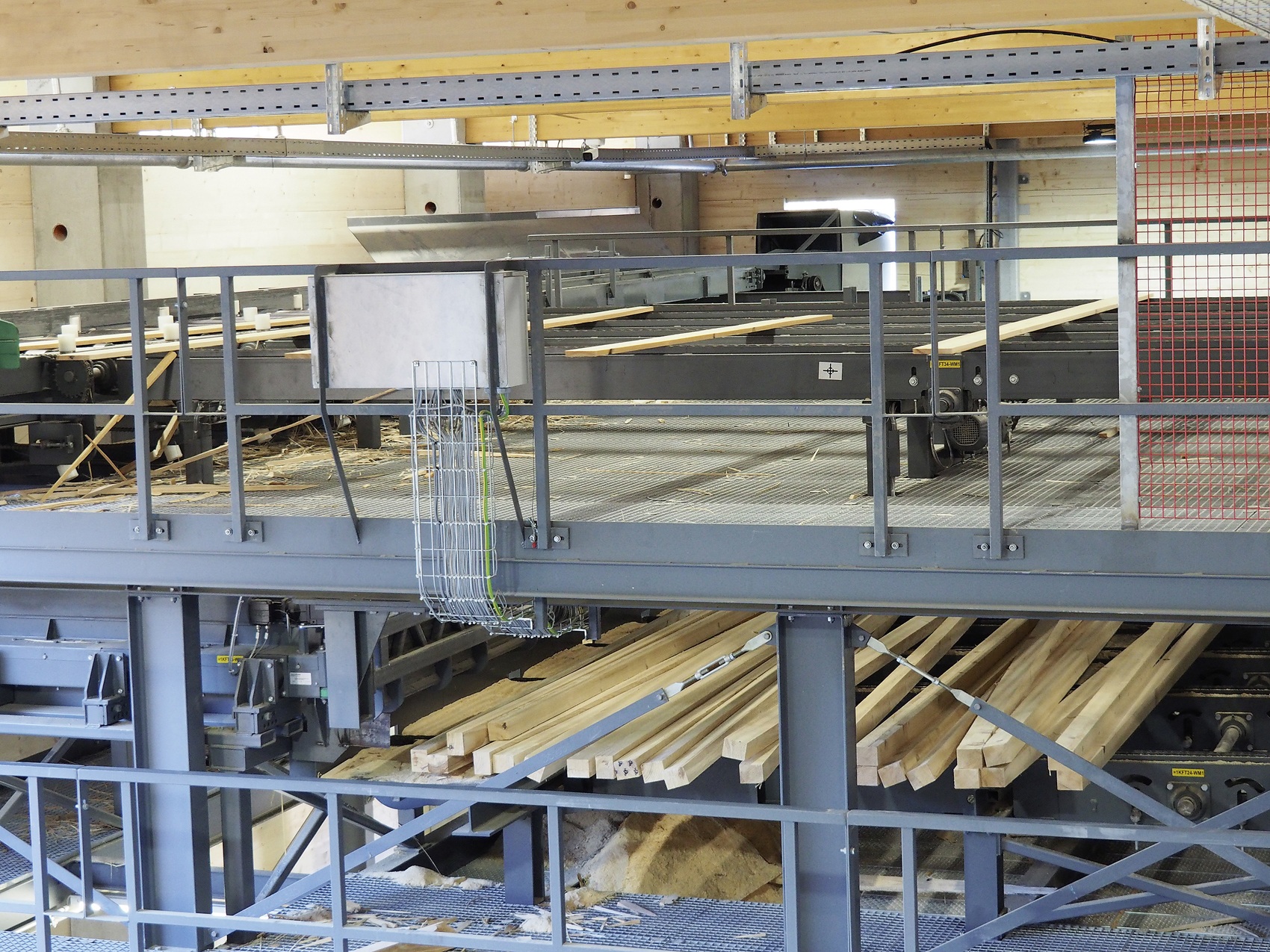
Infeeding from the saw line: Side products on the upper level, travel towards the boxes, while the main product travels below towards the stacking system.
The best concept
The choice of a supplier for the new plant fell on Kallfass, the mechanisation specialist from Baiersbronn-Klosterreichenbach/ DE. “Naturally enough, we took a look at different suppliers, but Kallfass offered us the best concept”, related Wolfgang Kolb, justifying the decision he reached together with his son, Fabian Kolb. One aspect appealed in particular to the pair. “Kallfass was the only supplier to develop a combined solution for the main product and side product, being in fact the only one to come up with the idea. Together with the close proximity to Baiersbronn and the excellent reputation Kallfass enjoys, the latter was the decisive factor”, explained Kolb.
„Kallfass was the only supplier to offer us a combined solution for the main product and side product.“
Wolfgang Kolb, owner of Sägewerk Kolb
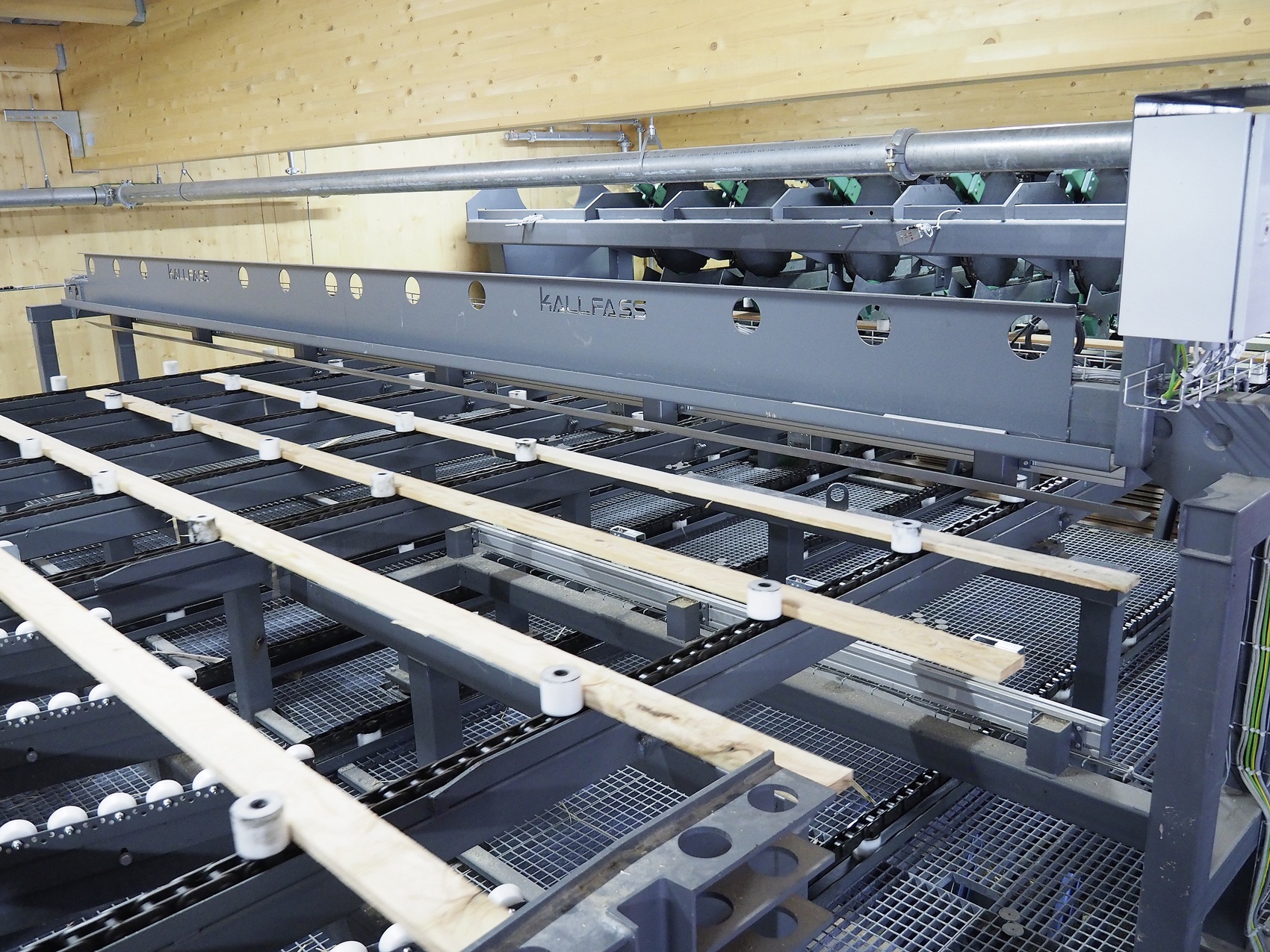
The length, width and thickness of the side product and smaller main product dimensions are measured …

… and then assigned to one of the 75 inclined boxes.
No worker needed for the side products
Kallfass delivered a complete sorting system to Kolb, with 75 boxes, a stacking system and a connection to the sawmill. During a tour of the facility, Kallfass Managing Director Hans Haist pointed out the separating unit behind the board edger. “Depending on the sawing pattern, up to five boards positioned closely next to each other can be delivered to the existing cross conveyor. We integrated a further separating unit in this area by installing a single feed unit in the sawmill, ensuring continuous and uninterrupted transport down the line”. The side products from the board edger are conveyed to the upper deck of the sorting system via a conveyor belt. They continue their journey from a curved conveyor to a cross conveyor towards the boxes. Feeding on a carrier chain continues in this area, and the length, width and thickness is measured. This data is used for box classification. The boards then continue their journey into one of the 75 boxes. “What’s special here is that, in principle, the side boards are sorted without worker intervention. A worker assessing the product and, in effect, standing one floor lower can intervene in the process if necessary”, explained Kallfass Project Manager Dominik Hauser. This means that the entire plant can be operated with just one worker.
Kallfass installed its reliable inclined boxes at Kolb. “The advantage of this is that – due to a filling level control – the boards only have a minimum drop height and, as a consequence, fewer breakages occur”, explained Haist. “Also, a box can now hold almost twice the previous volume”, added Fabian Kolb. A box that has been suitably filled is then discharged downwards. The journey to the assessment station continues via a longitudinal conveyor and unscrambler. Where necessary, the worker can eject boards with waney edges or of unsuitable quality downwards though a flap. The layers of boards then pass through the tried and trusted multiple cross-cut saw from Kallfass. This is equipped with a zero line and three variable saw aggregates. Finally, the layers are transferred to the stacking systems through automated stick placement, with the completed packages travelling downwards and being strapped manually by the forklift operator. The installation of an automated strapping system is planned in this area.
Stacking of the main product is also automated
As mentioned at the outset, Kolb can also move main products of up to 6 m in length on the new Kallfass plant. These travel from the circular re-saw on a conveyor belt to the sorting system on the lower floor. They move from here through a separating unit to the worker and complete the same journey as the side products through the multiple cross-cut saw and layer formation to the stacker. “Moving the side boards and part of the main product over the same system gives us enormous flexibility”, emphasised Wolfgang Kolb.
The new Kallfass plant is designed for lengths of 2.5 to 6 m and side products with a thickness of 18 to 100 mm. When stacking the main product, Haist estimates the thickness to be 120 mm. The sorting system is designed for an output of up to 50 cycles per minute, while the stacker can complete up to ten layers each minute. Kallfass installed the control cabinets and electronics in a container which was delivered to Kolb as a turnkey unit. The supplier also delivered the entire control system. The layout of the sawmill, with the plant on two sides of a stream, led Kallfass to construct the new sorting and stacking system 0.5 m higher. The walls of the sawmill, constructed with cross-laminated timber (CLT), are also at the same distance from the floor. “There are also no motors in this area, so the plant can begin operating quickly again following any flooding”, explains Haist.
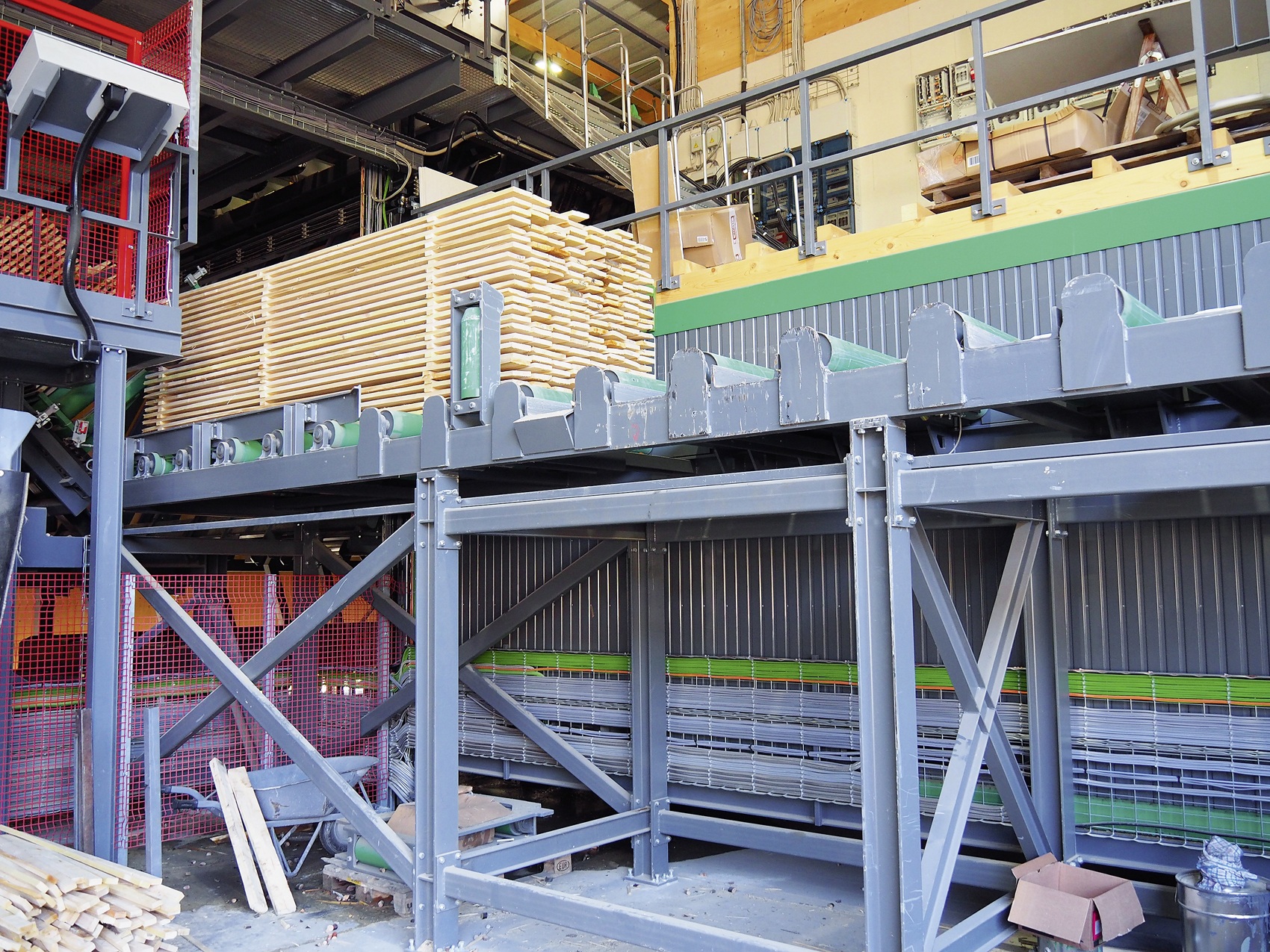
Infeeding from the saw line: Side products on the upper level, travel towards the boxes.
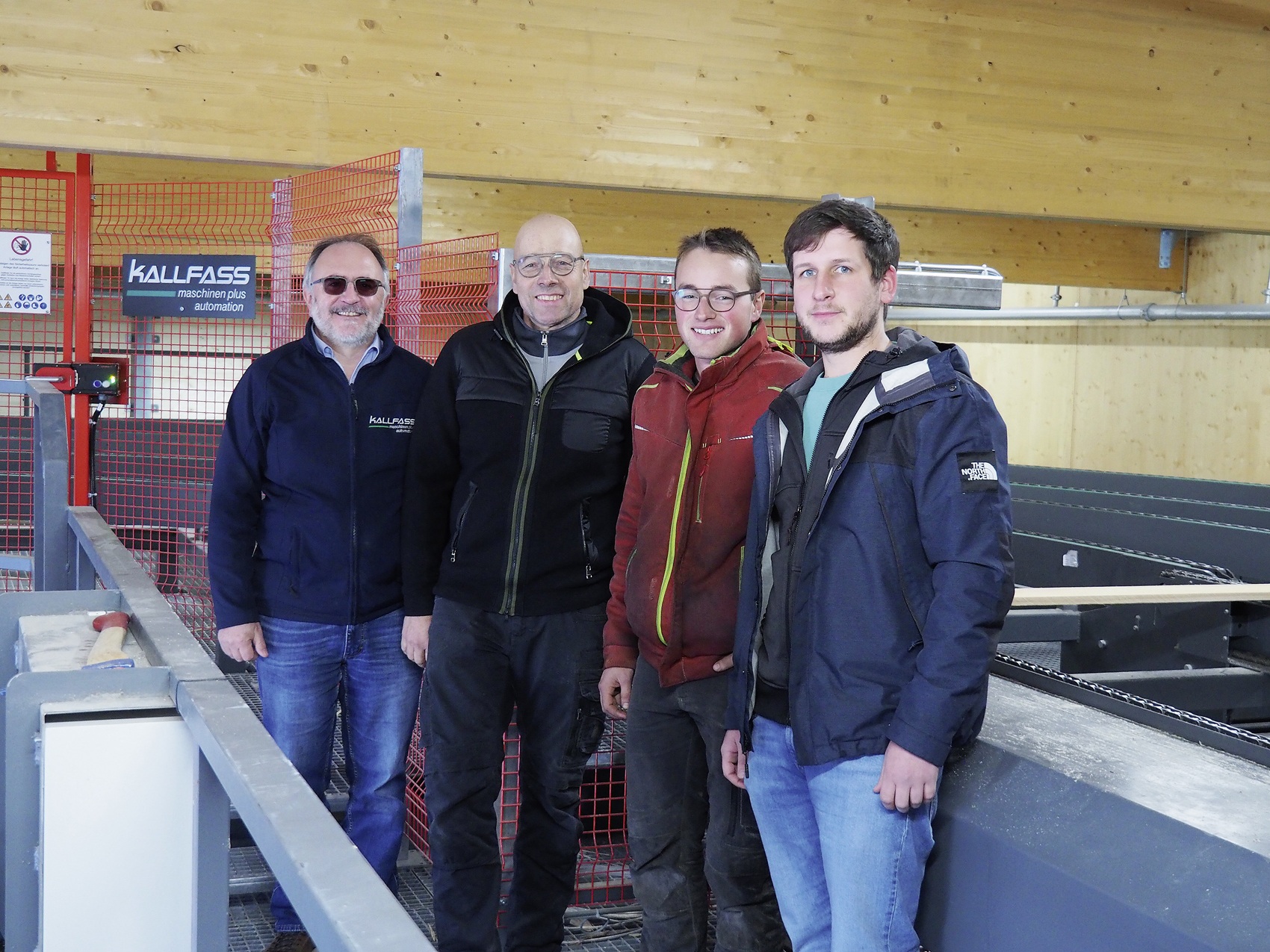
Hans Haist (l.) and Dominik Hauser (r.) with Wolfgang (2nd from left) and Fabian Kolb in the sorting system.
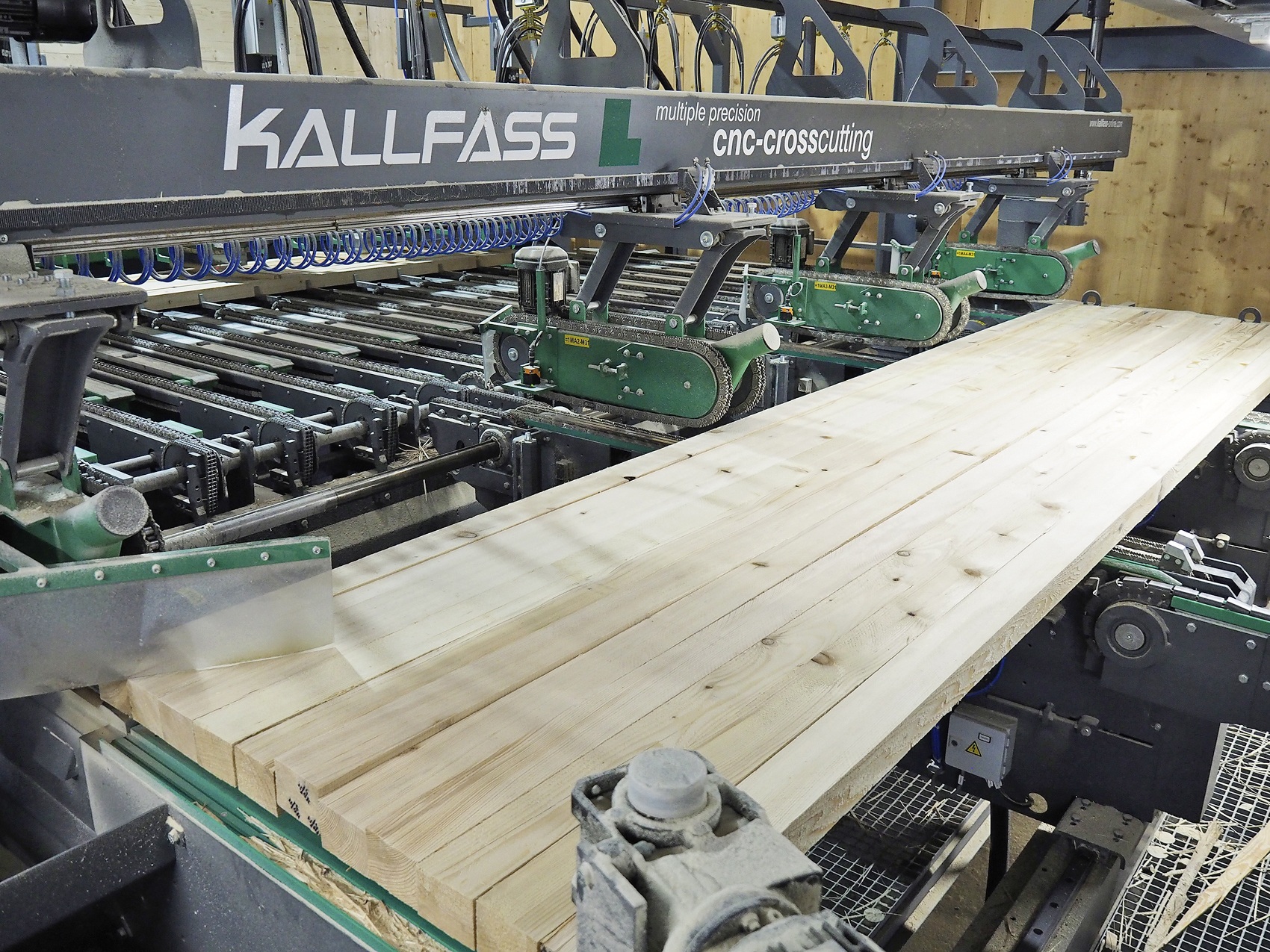
The multiple cross-cut saw from Kallfass enables final trimming of the main product and side products before the timber enters the stacking system.
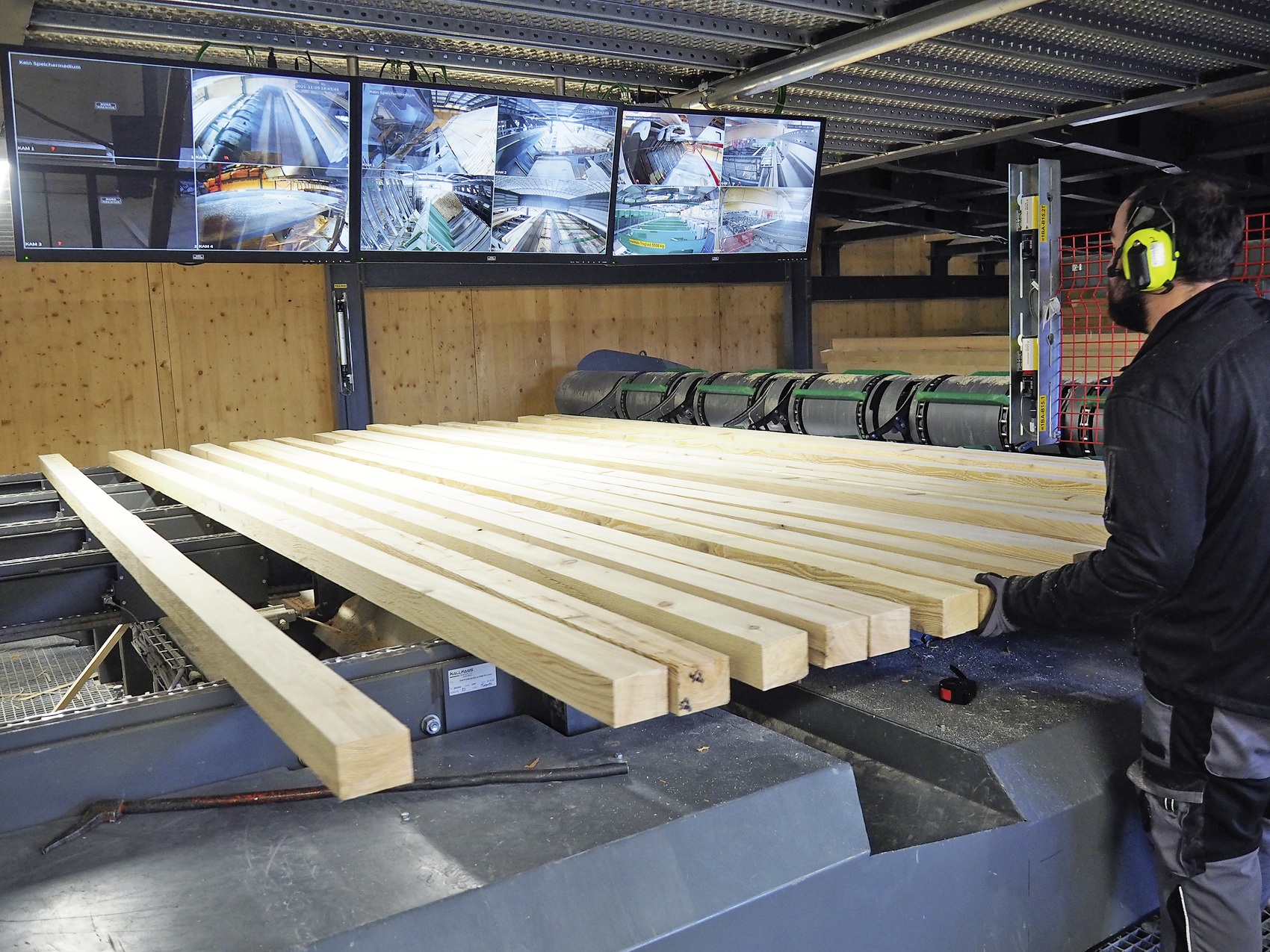
Kallfass designed the new sorting and stacking plant for both the main product …
